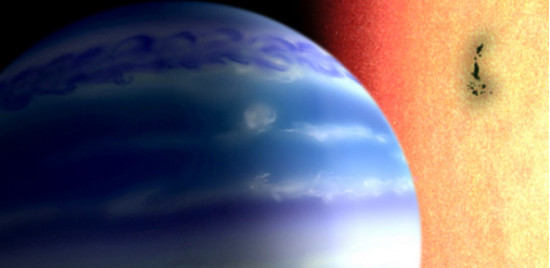
It is significant as it’s the smallest planet so far where scientists have been able to identify atmospheric chemical components. It’s a remarkable discovery as we further the quest to learn about the possible future cohabitation of other planets.
The findings were first published in the Journal of Nature. The team of scientists and astronomers was headed by Drake Deming, a UMD Astronomy Professor who is considered an expert in the study of exoplanets. Exoplanets are those planets which orbit suns outside of our solar system.
Finding the water vapor and hydrogen in the atmosphere of the exoplanet HAT P-11b wasn’t easy. It took analyses of observations using three different NASA telescopes to be able to determine the elements existed there. The data also helps to confirm that the way planets were formed in our own solar system seems to apply to other planetary systems as well.
So how do scientists find water on these planets?
The publication Scoop explains it this way, “They use a quirk of light that happens when a planet transits, or passes in front of, its host star. Material in the planet’s atmosphere absorbs some of the star’s light, and that makes the planet appear bigger – similar to the way our sun seems bigger at sunset, when we are looking to the horizon across a broad swath of Earth’s atmosphere. By plotting changes in the exoplanet’s size, and relating them to the wavelength of electromagnetic radiation that the telescope observes, astronomers get a graph that shows how much of the star’s radiation the planet’s atmosphere is absorbing. The shape of that graph, called a transmission spectrum, can reveal what chemicals are present in the atmosphere.”
The bigger the planet, the more obvious the changes are in the planet’s size during its transit across its host star. Astronomers have used this technique to describe the atmospheres of several giant planets, the size of our solar system’s Jupiter. In this study, the team wanted to analyze the atmosphere of a significantly smaller planet.”
So what does this mean for us? Nothing yet, as the research is only at an elementary stage, but it certainly begs for further investigation. Water is a precondition for life, so if another planet with water could be made habitable, it would be a valuable future asset for the human race. It also a key element to possibly finding life on another planet as well.
Astronomers have long been interested in whether other planets formed in the same way earth did and could therefore share other similarities, and this is the first evidence of this being the case.
Comments